The pathbreaking musician reveals the health issues that make it unlikely he will ever again perform in public.

The last time Keith Jarrett performed in public, his relationship with the piano was the least of his concerns. This was at Carnegie Hall in 2017, several weeks into the administration of a divisive new American president.
Mr. Jarrett — one of the most heralded pianists alive, a galvanizing jazz artist who has also recorded a wealth of classical music — opened with an indignant speech on the political situation, and unspooled a relentless commentary throughout the concert. He ended by thanking the audience for bringing him to tears.
He had been scheduled to return to Carnegie the following March for another of the solo recitals that have done the most to create his legend — like the one captured on the recording “Budapest Concert,” to be released on Oct. 30. But that Carnegie performance was abruptly canceled, along with the rest of his concert calendar. At the time, Mr. Jarrett’s longtime record label, ECM, cited unspecified health issues. There has been no official update in the two years since.
But this month Mr. Jarrett, 75, broke the silence, plainly stating what happened to him: a stroke in late February 2018, followed by another one that May. It is unlikely he will ever perform in public again.
“I was paralyzed,” he told The New York Times, speaking by phone from his home in northwest New Jersey. “My left side is still partially paralyzed. I’m able to try to walk with a cane, but it took a long time for that, took a year or more. And I’m not getting around this house at all, really.”
Mr. Jarrett didn’t initially realize how serious his first stroke had been. “It definitely snuck up on me,” he said. But after more symptoms emerged, he was taken to a hospital, where he gradually recovered enough to be discharged. His second stroke happened at home, and he was admitted to a nursing facility.
During his time there, from July 2018 until this past May, he made sporadic use of its piano room, playing some right-handed counterpoint. “I was trying to pretend that I was Bach with one hand,” he said. “But that was just toying with something.” When he tried to play some familiar bebop tunes in his home studio recently, he discovered he had forgotten them.
Mr. Jarrett’s voice is softer and thinner now. But over two roughly hourlong conversations, he was lucid and legible, aside from occasional lapses in memory. He often punctuated a heavy or awkward statement with a laugh like a faint rhythmic exhalation: Ah-ha-ha-ha.

Raised in the Christian Science faith, which espouses an avoidance of medical treatment, Mr. Jarrett has returned to those spiritual moorings — up to a point. “I don’t do the ‘why me’ thing very often,” he said. “Because as a Christian Scientist, I would be expected to say, ‘Get thee behind me, Satan.’ And I was doing that somewhat when I was in the facility. I don’t know if I succeeded, though, because here I am.”
“I don’t know what my future is supposed to be,” he added. “I don’t feel right now like I’m a pianist. That’s all I can say about that.”
After a pause, he reconsidered. “But when I hear two-handed piano music, it’s very frustrating, in a physical way. If I even hear Schubert, or something played softly, that’s enough for me. Because I know that I couldn’t do that. And I’m not expected to recover that. The most I’m expected to recover in my left hand is possibly the ability to hold a cup in it. So it’s not a ‘shoot the piano player’ thing. It’s: I already got shot. Ah-ha-ha-ha.”
IF THE PROSPECT of a Keith Jarrett who no longer considers himself a pianist is dumbfounding, it might be because there has scarcely been a time he didn’t. Growing up in Allentown, Pa., he was a prodigy. According to family lore, he was 3 when an aunt indicated a nearby stream and told him to turn its burbling into music — his first piano improvisation.
Broad public awareness caught up with him in the late 1960s, when he was in a zeitgeist-capturing group led by Charles Lloyd, a saxophonist and flutist. The brilliant drummer in that quartet, Jack DeJohnette, then helped Miles Davis push into rock and funk. Mr. Jarrett followed suit, joining an incandescent edition of Davis’s band; in live recordings, his interludes on electric piano cast a spell.

Mr. Jarrett soon hit on something analogous in his own concerts, allowing improvised passages to become the main event. He was a few years into this approach in 1975, when he performed what would become “The Köln Concert” — a sonorous, mesmerizing landmark that still stands as one of the best-selling solo piano albums ever made. It has also been hailed as an object lesson in triumph over adversity, including Mr. Jarrett’s physical pain and exhaustion at the time, and his frustration over an inferior piano.
That sense of overcoming intransigent obstacles is an enduring feature of Mr. Jarrett’s myth. At times over the years, it could even seem that he set up his own roadblocks: turning concerts into trials of herculean intensity, and famously interrupting them to admonish his audience for taking pictures, or for excessive coughing. ANew York Times Magazineprofile in 1997 bore a wry headline: “The Jazz Martyr.” The following year, Mr. Jarrett announced that he’d been struggling with the consuming and mysterious ailment known as chronic fatigue syndrome.

While regaining strength, he recorded a series of songbook ballads in his home studio (later released as the touching, exquisite album “The Melody at Night, With You”). Then he reconvened his longtime trio, a magically cohesive unit with Mr. DeJohnette and the virtuoso bassist Gary Peacock.
Their first comeback concert, in 1998, recently surfaced on record, joining a voluminous discography. It captures a spirit of joyous reunion not only for Mr. Jarrett and his trio partners but also between a performing artist and his public. He titled that album “After the Fall”; ECM released it in March 2018, unwittingly around the time of his first stroke.
Loss has shrouded Mr. Jarrett’s musical circle of late. Mr. Peacock died last month, at 85. Jon Christensen, the drummer in Mr. Jarrett’s influential European quartet of the 1970s, died earlier this year. Mr. Jarrett also led a groundbreaking American quartet in the ’70s, and its other members — the saxophonist Dewey Redman, the bassist Charlie Haden, the drummer Paul Motian, all major figures in modern jazz — have passed on, too.
Faced with these and other difficult truths, Mr. Jarrett hasn’t exactly found solace in music, as he once would have. But he derives satisfaction from some recordings of his final European solo tour. He directed ECM to release the tour’s closing concert last year, as “Munich 2016.” He’s even more enthusiastic about the tour opener, “Budapest Concert,” which he briefly considered calling “The Gold Standard.”
AS HE BEGINS to come to terms with his body of work as a settled fact, Mr. Jarrett doesn’t hesitate to plant a flag.
“I feel like I’m the John Coltrane of piano players,” he said, citing the saxophonist who transformed the language and spirit of jazz in the 1960s. “Everybody that played the horn after he did was showing how much they owed to him. But it wasn’t their music. It was just an imitative thing.”
Of course, imitation — even of oneself — is anathema to the pure, blank-slate invention Mr. Jarrett still claims as his method. “I don’t have an idea of what I’m going to play, any time before a concert,” he said. “If I have a musical idea, I say no to it.” (Describing this process, he still favors the present tense.)
Beyond his own creative resources, the conditions of every concert are unique: the characteristics of the piano, the sound in the hall, the mood of the audience, even the feel of a city. Mr. Jarrett had performed in Budapest four times before his 2016 concert at the Bela Bartok National Concert Hall, feeling an affinity he ascribes to personal factors: His maternal grandmother was Hungarian, and he played Bartok’s music from an early age.
“I felt like I had some reason to be close to the culture,” he said.

The embrace of folkloric music by Bartok and other Hungarian composers further nudged Mr. Jarrett toward a dark quality — “a kind of existential sadness, let’s say, a deepness” — powerfully present in the concert’s first half. The second half, as admirers of “The Köln Concert” will appreciate, features a few of Mr. Jarrett’s most ravishing on-the-spot compositions. Those ballads, like “Part V” and “Part VII,” spark against briskly atonal or boppish pieces, gradually building the case for a mature expression that might not have been possible earlier in his career.
Part of that evolution has to do with the structure of Mr. Jarrett’s solo concerts, which used to unfold in long, unbroken arcs but now involve a collection of discrete pieces, with breaks for applause. Often the overarching form of these more recent concerts is only apparent after the fact. But Budapest was an exception.
“I saw this one while I was in it, which is why I chose that as the best concert on that entire tour,” Mr. Jarrett said. “I mean, I knew it. I knew something was happening.”
The crucial factor, he acknowledged, was an uncommonly receptive audience. “Some audiences seem to applaud more when there’s something crazy going on,” he said. “I don’t know why, but I wasn’t looking at that in Budapest.”
Given that Mr. Jarrett has made all but a small portion of his recorded output in front of an audience, his cantankerous reputation might best be understood as the turbulent side of a codependent relationship. He put the matter most succinctly during a Carnegie Hall solo concert in 2015, when he announced, “Here’s the big deal that nobody seems to realize: I could not do it without you.”

As he renegotiates his bond with the piano, Mr. Jarrett faces the likelihood of that other relationship — the one with the public — coming to an end.
“Right now, I can’t even talk about this,” he said when the issue came up, and laughed his deflective laugh. “That’s what I feel about it.”
And while the magnificent achievement of “Budapest Concert” is a source of pride, it’s not hard to see how it could also register as a cosmic taunt.
“I can only play with my right hand, and it’s not convincing me anymore,” Mr. Jarrett said. “I even have dreams where I am as messed up as I really am — so I’ve found myself trying to play in my dreams, but it’s just like real life.”
Download Keith Jarret’s sheet music from our Library.
Browse in the Library:
| Artist or Composer / Score name | Cover | List of Contents |
|---|---|---|
| ABRSM Piano Exam 2023-24 Grade 3 C3 THE ENTERTAINER – SCOTT JOPLIN |
 |
|
| ABRSM Piano Exam 2023-24 In The Groove by Mike Cornick |
 |
|
| ABRSM Piano Exam 2023-24 Indigo Moon by Elissa Milne |
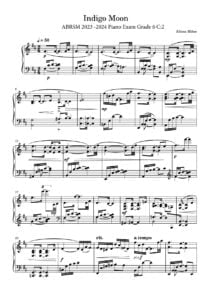 |
|
| ABRSM Piano Exam 2023-24 Jester’s Jig by Chee-Hwa Tan |
 |
|
| ABRSM Piano Exam 2023-24 Love Theme by Catherine Rollin |
 |
|
| ABRSM Piano Exam 2023-24 Minuet In G (Anonymous) |
 |
|
| ABRSM Piano Exam 2023-24 The Song Of Twilight by Yoshinao Nakada |
 |
|
| ABRSM Piano Exam Pieces Grade 1 2013 & 2014 syllabus |
 |
ABRSM Piano Exam Pieces Grade 1 2013 & 2014 syllabus |
| ABRSM Piano Exam Pieces Grade 1 2023 2024 |
 |
ABRSM Piano Exam Pieces Grade 1 2023 2024 |
| ABRSM Piano Exam Pieces Grade 1 2025 2026 |
 |
ABRSM Piano Exam Pieces Grade 1 2025 2026 |
| ABRSM Piano Exam Pieces Grade 2 2023 2024 |
 |
ABRSM Piano Exam Pieces Grade 2 2023 2024 |
| ABRSM Piano Exam Pieces Grade 3 2013 2014 |
 |
|
| ABRSM Piano Exam Pieces Grade 3 2023 2024 |
 |
ABRSM Piano Exam Pieces Grade 3 2023 2024 |
| ABRSM Piano Exam Pieces Grade 3 2025 2026 |
 |
ABRSM Piano Exam Pieces Grade 3 2025 2026 |
| ABRSM Piano Exam Pieces Grade 4 2021 2022 |
 |
ABRSM Piano Exam Pieces Grade 4 2021 2022 |
| ABRSM Piano Exam Pieces Grade 4 2023 2024 |
 |
|
| ABRSM Piano Exam Pieces Grade 5 2023 2024 |
 |
ABRSM Piano Exam Pieces Grade 5 2023 2024 |
| ABRSM Piano Exam Pieces Grade 6 2023 2024 |
 |
ABRSM Piano Exam Pieces Grade 6 2023 2024 |
| ABRSM Piano Exam Pieces Grade 7 2023 2024 |
 |
ABRSM Piano Exam Pieces Grade 7 2023 2024 |
| ABRSM Piano Exam Pieces Grade 8 2023 2024 |
 |
ABRSM Piano Exam Pieces Grade 8 2023 2024 |
| ABRSM Piano Exam Pieces Grade 8 2025 2026 |
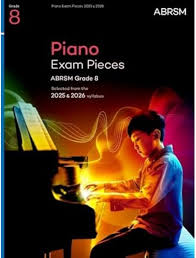 |
ABRSM Piano Exam Pieces Grade 8 2025 2026 |
| ABRSM Piano Mix 3 for Easy Piano Grades 3-4 |
 |
ABRSM Piano Mix 3 for Easy Piano Grades 3-4 |
| ABRSM Piano Prep Test |
 |
|
| ABRSM Piano Scales And Arpeggios from 2021 Guide For Practical Grades |
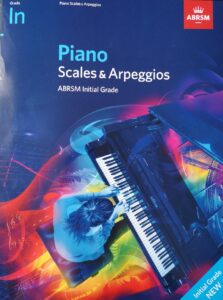 |
|
| ABRSM Selected Piano Exam 2011 2012 Grade 1 |
 |
|
| ABRSM Selected Piano Exam Grade 2 (2011 2012 ) |
 |
|
| ABRSM Specimen Aural Tests Grade 1 to 3 |
 |
|
| ABRSM Specimen Aural Tests Grade 4 & 5 |
 |
|
| ABRSM Teaching notes on piano exam pieces (2013 & 2014) |
 |
|
| ABRSM The Manual Of Scales Broken Chords And Arpeggios For Piano |
 |
|
| ABRSM Theory of Music Exams Grade 8 (The Associated Board of Royal Schools of Music) 2010 |
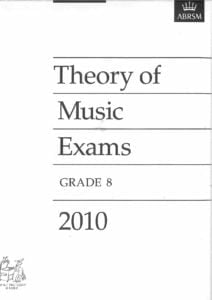 |
|
| AC/DC – Classic – Early Years – High Voltage And Let There Be Rock (Guitar Tab Songbook) |
 |
ACDC – Classic – Early Years – High Voltage And Let There Be Rock |
| AC/DC – Jam With AC/DC (PDF with MP3 audio tracks Guitar Tab Songbook) |
 |
Jam With ACDC |
| AC/DC Rock Score |
 |
|
| AC/DC, Best of (Guitar & Tablature) |
 |
Best Of ACDC (Guitar) |
| Ace Of Base – Beautiful Life | ||
| Ace Of Base – Dont Turn Around | ||
| Ace Of Base – Living In Danger | ||
| Acoustic 33 TOP Guitar Hits (Guitar Songbook) with Tablature – sheet music |
 |
Acoustic 33 TOP Guitar Hits (Guitar Songbook) – sheet music |
| Acoustic Blues Guitar By Kenny Sultan Guitar Tab |
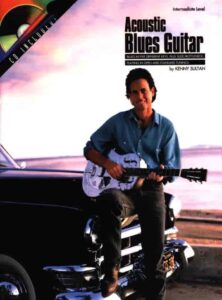 |
Acoustic Blues Guitar |
| Acoustic Blues Guitar Keith Wyatt with TABs |
 |
Acoustic Blues Guitar Keith Wyatt with TABs |
| Acoustic Blues Guitar Styles (Larry Sandberg) (with Tablature) |
 |
Acoustic Blues Guitar Styles (Larry Sandberg) |
| Acoustic Classics 42 songs Piano Vocal Guitar |
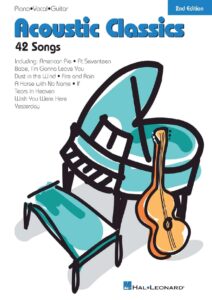 |
Acoustic Classics 42 songs Piano Vocal Guitar |
| Acoustic Guitar Bible (35 great songs) Guitar with TABs |
 |
Acoustic Guitar Bible (35 great songs) Guitar with TABs |
| Acoustic Rock (Guitar) Rolling Stones, Green Day, Pink Floyd, Bob Dylan (Songbook Guitar Tab) with Tablature |
 |
|
| Acoustic Rock 90’s, Best of – Guitar with Tablature |
 |
Acoustic Rock 90’s, Best of – Guitar |
| Acqua azzurra acqua chiara (Battisti) | ||
| Ad Te Levavi (Musescore File).mscz | ||
| Adagio (Lara Fabian) | ||
| Adagio MP3.zip | ||
| Adah’s Theme (La femme avec les yeux lumineux) Sex and the City |
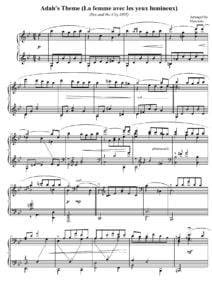 |
|
| Adah’s Theme (Le femme avec les yeux lumineux) Sex and the Cit | ||
| Adam – Adolphe Charles Holy Night Cantique-Nöel |
 |
|
| Adam – Cantique de Nöel Minuit Chretiens | Adam – Cantique de Noel Minuit Chretiens VS | |
| Adam – Derniers souvenirs d’un musicien |
 |
|
| Adam – O Holy Night | Adam – O Holy Night | |
| Adam – Souvenirs d’un musicien |
 |
|
| Adam (Cappeau) – Cantique de Noël. Easy Piano with voice or instrument (Paroles and lyrics) |
 |
Adam-Cappeau-Cantique-de-Noel- |
| Adam (Cappeau) – Cantique de Noel. Easy Piano with voice or instrument.mscz | ||
| Adam Cantique de Nöel Christmas song | Adam Cantique de noel | |
| Adam Carse – The History Of Orchestration Adam Carse |
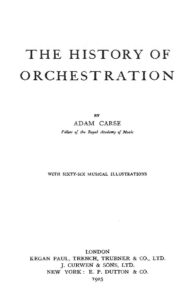 |
|
| Addams Family Theme (Musescore File).mscz | ||
| Addams Family Theme (Easy Piano) |
 |
|
| Addio Colonnello (Ennio Morricone) | ||
| Adele Songs from the Album 21 For SATB, SSA and Piano |
 |
Adele Songs from the Album 21 |
| Adele – 21 |
 |
ADELE 21 SONGBOOK |
| Adele – Chasing Pavements Piano Vocal guitar chords |
 |
|
| Adele – Easy on me (Piano solo with lyrics) |
 |
|
| Adele – Rolling in the Deep |
 |
|
| Adele – Rumor Has It |
 |
|
| Adele – Set Fire to the Rain |
 |
|
| Adele – Set Fire To The Rain (2) (Musescore File).mscz | ||
| Adele – Someone Like You | Adele – Someone Like You | |
| Adele – Someone Like You easy piano |
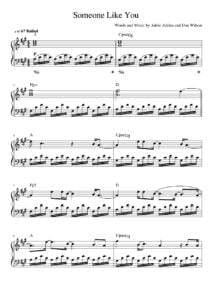 |
|
| Adele – The Best Of SongBook (12 songs arranged for easy piano) |
 |
Adele – The Best Of SongBook (12 songs arranged for easy piano) |
| Adele 19 [Piano, Guitar, Vocals] |
 |
Adele 19 [Piano, Guitar, Vocals] |
| Adele 25 Songbook |
 |
Adele 25 Songbook Contents —  |
| Adele Best Of Adele Big Note Piano (Adele Adkins) |
 |
Adele Best Of Adele Big Note Piano (Adele Adkins) |
| Adele Easy On Me Sheet Music |
 |
|
| Adele Original Keys For Singers (Adele) |
 |
Adele Original Keys For Singers (Adele) |
| Adele Skyfall (Piano Vocal Guitar Chords) | Adele Skyfall (Piano Vocal Guitar Chords) | |
| Adios Amor – Goodbye My Love as recorded by José Feliciano |
 |
|
| Adult All In One Course Level 1 With Audio Mp3 (Willard Palmer) |
 |
Lessons Alfred’s Basic Adult Piano Course Level 1 |
| Adult All In One Course Level 2 With Audio Mp3 (Willard Palmer) |
 |
Willard Palmer – Adult All-In-One Course Level 2 |
| Adult Greatest Movie Hits Piano Level 1 |
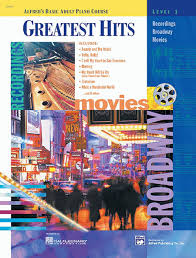 |
Adult Greatest Movie Hits Piano Level 1 |
| Adult Piano Adventures ALL-IN-ONE PIANO COURSE 1 |
 |
|
| Adult Piano Adventures All-In-One Piano Course Book 2 Book With Media Online (Nancy Faber, Randall Faber) Sheet Music |
 |
|
| Adult Piano Adventures Christmas – Book 1 (Nancy Faber Randall Faber) |
 |
|
| Adult Piano Adventures Christmas – Book 2 |
 |
Adult Piano Adventures Christmas – Book 2 |
| Adult Piano Adventures Popular Book 1 – Timeless Hits and Popular Favorites (Adult Piano Adventures Popular) |
 |
Adult Piano Adventures Popular Book 1 – Timeless Hits and Popular Favorites (Adult Piano Adventures Popular) |
| Adult Piano Course Greatest Movie Hits Piano Level 1 Recordings Broadway Movies |
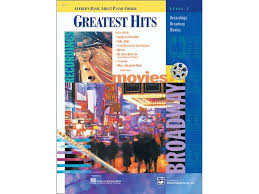 |
Adult Piano Course Greatest Movie Hits Piano Level 1 Recordings Broadway Movies |
| Advanced Harmonic Concepts by Wayne Naus (with audio MP3) |
 |
Advanced Harmonic Concepts by Wayne Naus |
| Advanced Harmonic Exercises For Jazz Piano |
 |
advanced harmonic exercises |
| Advanced Piano Solos 1 Encyclopedia by Tom Roed |
 |
Advanced Piano Solos 1 Encyclopedia by Tom Roed |
| Advanced Piano Solos 2 Complete by Tom Roed |
 |
Advanced Piano Solos 2 Complete by Tom Roed |
| Advanced Sacred Music Piano Solos by John Kraus |
 |
|
| Advanced Scale Concepts and Licks for Guitar (PDF + MP3 audio tracks Play Along) with Tablature |
 |
 |
| Aebersold – 110 – When I fall In Love – Romantic Ballads pdf with embedded audio MP3 Tracks |
 |
Jazz Play Along Vol 110 [When i Fall in Love] |
| Aebersold – 113 Embraceable You – Vocal Standards with audio MP3 Tracks |
 |
Jamey Aebersold – Vol 113 |
| Aebersold – 30 blues scale By Jamey Aebersold | Aebersold – 30 blues scale By Jamey Aebersold | |
| Aebersold – A New Approach To Jazz Improvisation Gettin’it together vol. 21 |
 |
aebersold gettin all together vol 21 |
| Aebersold – Practice Procedures For Memorizing Scales And Chords | Aebersold – Practice Procedures For Memorizing Scales And Chords | |
| Aebersold – Rapid Reference Vol 1-114 | Aebersold – Rapid Reference Vol 1-114 | |
| Aebersold – Vol 01 – How to Play and Improvise Jazz (with audio MP3) |
 |
Aebersold – Vol 01 – How to Play and Improvise Jazz |
| Aebersold – Vol 03 – The II-V7-I Progression Jazz Play Along Book + Audio Mp3 |
 |
|
| Aebersold – Vol 105 – Dave Brubeck Jazz Play Along Book + Audio Mp3 |
 |
|
| Aebersold – Vol 118 – [Groovin Jazz] (with audio MP3) |
 |
|
| Aebersold – Vol 32 – Ballads Jazz Play Along Book + Audio Mp3 |
 |
|
| Aebersold – Vol 34 – Jam Session Jazz Play Along Book + Audio Mp3 |
 |
Includes MP3 Play along themes as Blue moon, The shadow of your smile, Over the rainbow, etc. |
| Aebersold – Vol 45 – [Bill Evans] Jazz Play Along Book + Audio Mp3 |
 |
Aebersold – Vol 45 – [Bill Evans] |
| Aebersold – Vol 58 – Unforgettable Standards Jazz Play Along Book + Audio Mp3 |
 |
aebersold unforgettable standards sheet music |
| Aebersold – Vol 76 – David Baker – How To Learn Tunes (A Jazz Musician’s Survival Guide) |
 |
how to learn tunes |
| Aebersold 25 How To Practice By Jamey Aebersold | Aebersold 25 | |
| Aebersold Antonio Carlos Jobim Vol 98 – Bossa Nova Songbook Jazz Play Along Book + Audio Mp3 |
 |
Aebersold Antonio Carlos Jobim Vol 98 – Bossa Nova Songbook |
| Aebersold Anyone Can Improvise – 52 Points To Remember | Aebersold Anyone Can Improvise – 52 Points To Remember | |
| Aebersold Jazz EAR training (with audio MP3) |
 |
Aebersold Jazz EAR train |
| Aebersold Jazz Handbook 09 Tips For Learning A New Tune & Practice Procedures For Memorizing |
 |
Aebersold Jazz HANDBOOK |
| Aebersold Jazz Play-Along Books & audio MP3 1st Part Full Collection – Vol 1- 40 (with MP3) for all instruments |
Compressed file  Aebersold Full Collection Part 1 – Vol 1- 40 Aebersold Full Collection Part 1 – Vol 1- 40 |
40 volumes with MP3 Aebersold Book Index Vol.001-106 |
| Aebersold Jazz Play-Along Books & audio MP3 2nd Part Full collection Vol 41- 75 for all instruments | Compressed fileAebersold Full Collection Part 2 – Vol 41- 75.. | 35 volumes with MP3 Aebersold Book Index Vol.001-106 |
| Aebersold Jazz Play-Along Books & audio MP3 3rd Part Full Collection – Vol 76- 112 (with MP3) | Compressed fileAebersold Full Collection Part 3 – Vol 76- 112 | 37 volumes with MP3 Aebersold Book Index Vol.001-106 |
